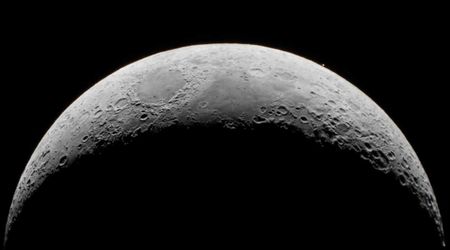Saudi Space Agency's CubeSat to be launched aboard NASA's Artemis II test flight

In a significant step towards international collaboration in space exploration, NASA and the Saudi Space Agency have formalized an agreement that will see a Saudi Arabian CubeSat hitch a ride on NASA's upcoming Artemis II test flight. The partnership, initially made during a visit to Saudi Arabia, saw President Donald Trump and His Royal Highness Crown Prince Mohammed bin Salman announce the agreement on May 13 in Riyadh, as per NASA.

The Saudi CubeSat, a small satellite with significant scientific potential, will be deployed in high Earth orbit from a spacecraft adapter on the Space Launch System (SLS) rocket, following the safe separation of the Orion spacecraft, carrying its crew of four astronauts. It will study various aspects of space weather at different distances from the Earth.

NASA's Artemis II is proving to be a hub for international scientific collaboration. The mission provides participating countries with valuable access to the high Earth orbit environment to conduct their own payload experiments. Alongside Saudi CubeSat, the mission will also host satellites from the German space agency DLR and the Korea Aerospace Agency for CubeSats.

Roughly the size of a shoe box, CubeSats serve as platforms for technology demonstration and scientific investigations, aimed at enhancing our knowledge of the space environment. The Saudi Space Agency's CubeSats will collect data on key aspects of the space environment. It will include space radiation levels, solar energetic particles, and magnetic fields, all of which contribute to a better understanding of space. The CubeSats have the objective of studying the environment close to Earth after separating from the rocket, while the Orion spacecraft will carry its crew on a 10-day voyage to orbit and return from the moon. This mission is part of NASA's Artemis II campaign, which seeks to explore the Moon for scientific discovery, economic benefits, and future human exploration.
CubeSats have gained significant popularity, especially as launching them into space has become more affordable and streamlined. Primarily used in low Earth orbit for earth observation, communication testing, and miniature experiments, CubeSats owe their standardized designs to a 1999 initiative by engineers at two American universities. They created specifications for a small, inexpensive satellite with dimensions of 10 cm x 10 cm x 10 cm, called 1U, similar in size to a Rubik’s Cube, not weighing more than 1.33 kg. Their uniform size and shape allow for efficient packing and deployment from rockets using spring-loaded dispensers, with a record of 120 CubeSats launched from a single rocket. NASA also frequently deploys CubeSats from the International Space Station.
Since 1999, 1600 CubeSats have been launched, showing their growing utility beyond their original purpose in university projects and experiments. Commercial enterprises are now designing them for a wide range of applications, such as agriculture, forestry, energy, media and entertainment, civil engineering, traffic monitoring, and archaeology. A prime example of their capability is the 2018 Mars mission, where two CubeSats, MarCO-A and MarCO-B, provided data to Earth during the InSight lander's descent and landing on Mars, as stated on the Science Learning Hub.









